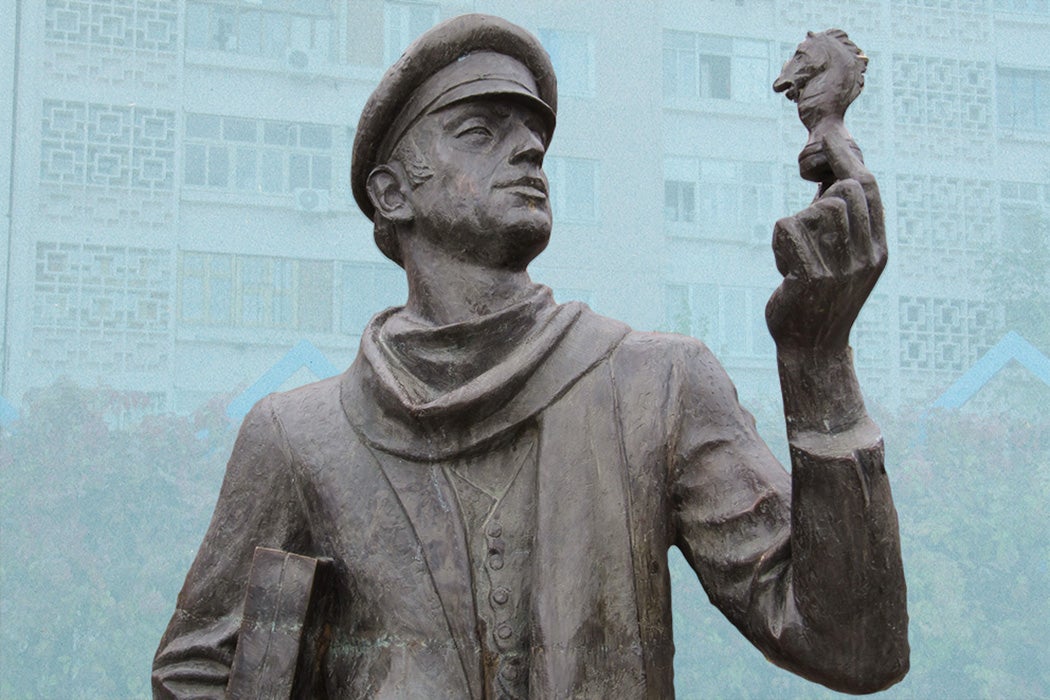The figure of the con artist seems quintessentially capitalist, skillfully conniving you into their confidence to relieve you of your money, but they existed in the Soviet Union as much as anywhere. In fact, Ostap Bender, the conman hero of two popular novels (1928, 1931) by the team of Ilya Ilf and Yevgeny Petrov, was something of a cultural touchstone in the USSR. Actual Soviet con artists (all men, in the examples under discussion) were inevitably described as “real-life Ostap Benders.”
“In his own way, the conman is an acute social commentator,” writes Sheila Fitzpatrick, historian of the Russian Revolution. “A good grasp of social and bureaucratic practices is no less essential to his success than the ability to inspire trust.”
Fitzpatrick explains how these “smooth operators” maneuvered “around Soviet bureaucracy, with its eternal demand for ‘papers’ and its credulousness toward anything with an official stamp and letterhead.” Their marks, or targets, were Soviet citizens who were “endlessly hungry for scarce consumer goods and eager for opportunities to accrue them.” Soviet bureaucrats, quick to respond to official-sounding requests, were another reliable target, with the special economy of Communist Party leaders, who had access to many more products than regular citizens, a particular prize.
There were, of course, con artists before the revolution. In fact, a tradition of Tsar-impersonators even had a name, samozvanstvo, which was given new life in the 1920s as a name for those claiming to be relatives of great men (grandsons of Karl Marx, say) and the first generation of Bolsheviks.
“Revolutions are identity crises requiring people to reinvent themselves,” writes Fitzpatrick. To survive, everybody, not just scammers, had to become a “bit of an operator and impersonator.” Blat, “the informal system of reciprocal favors through with citizens obtained scarce goods and services,” became ripe for exploitation by enterprising frauds.
Until the introduction of internal passports in 1933, “there was a flourishing black market trade in blank sheets of paper with institutional letterhead, institutional stamps, and false identity documents of all kinds.” One twenty-five-year-old conman arrested in 1925 had a Communist Party membership card dating to before his birth; a trade union card; membership cards from the Society of Old Bolsheviks and the Society of Former Political Prisoners; and documents “attesting to his participation in the 1905 Revolution.” Fitzpatrick notes that the culture of fake papers extended to the non-criminal world, as ordinary people tried to hide politically-dangerous family connections.
To show the susceptibility of institutions to swindlers, two journalist in the 1930s set up the All-Union Trust for the Exploitation of Meteoric Metals. Armed with letters from legitimate industrial authorities impressed with their plan to harvest meteors, they get a grant from the State Bank itself. “To the great disappointment of the journalists, they were forbidden to publish this story because it made so many officials look foolish.”
Perhaps more dangerously, Fitzpatrick notes, the impersonation of OGPU/NKVD (later called KGB) personnel also “was a flourishing line of fraud.”
Weekly Newsletter
As with the revolution’s upheavals, the chaos of World War II resulted in “all sorts of swindling, confidence tricks, and impostures.” False claims about war service were popular in the war’s aftermath, especially since decorated veterans and invalids were given special privileges. One conman who claimed two Hero of the Soviet Union medals for his amputated feet—lost to frost-bite in an escape attempt from a labor camp—convinced some twenty-seven ministries to fall for his story, piling him with cash, goods, and services. He was notable enough to earn mentions in Stalin’s weekly intelligence reports in 1947.
Ostap Bender was definitely no Hero of the Soviet Union, at least officially. In fact, Ilf and Petrov’s novels were banned between 1948 and 1956. Once the ban was lifted, the books were published repeatedly during the 1960s–1980s. After the breakup of the USSR, the books became more popular than ever. Everybody loves a con artist, it seems, except maybe the apparatchik taken in by one.







